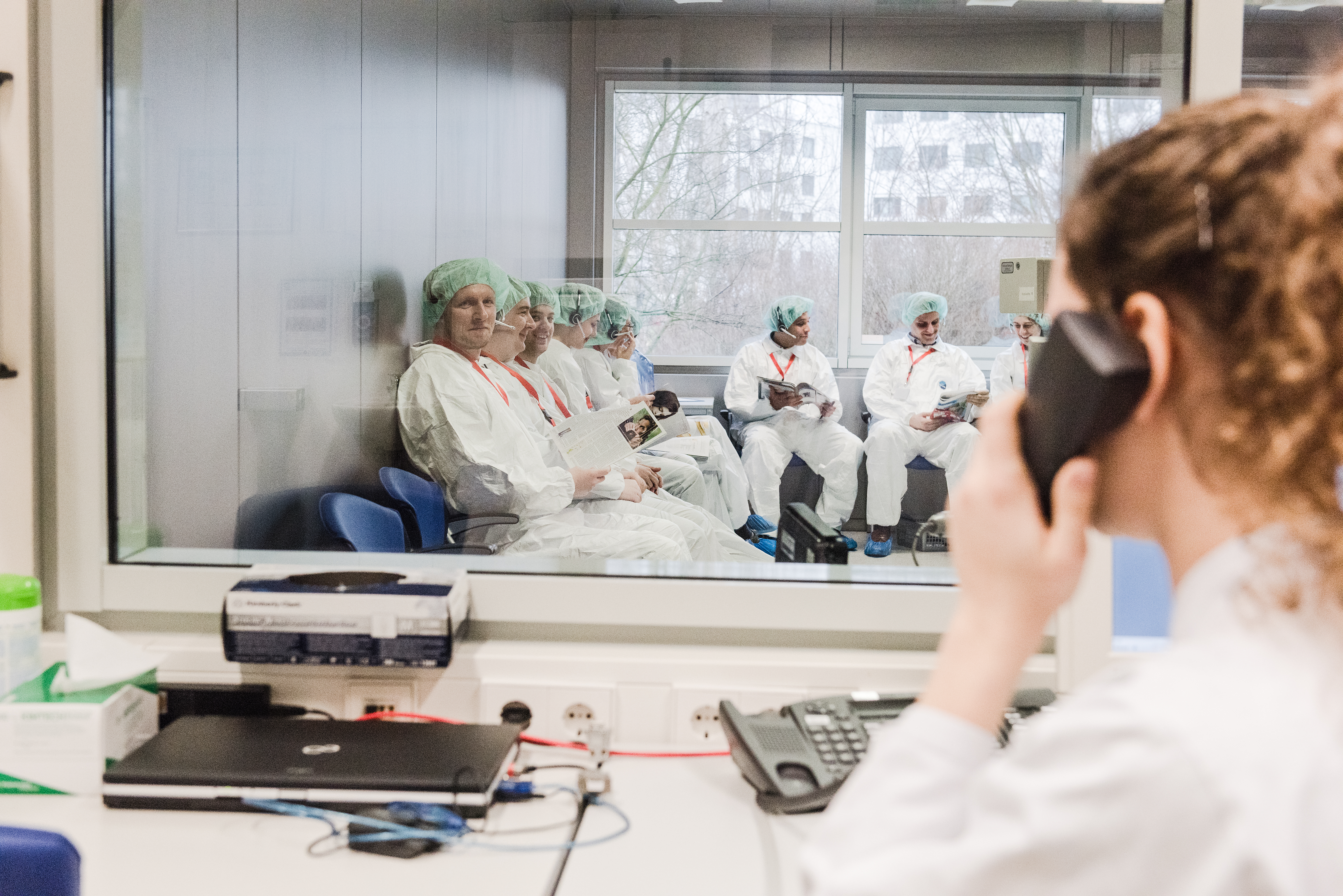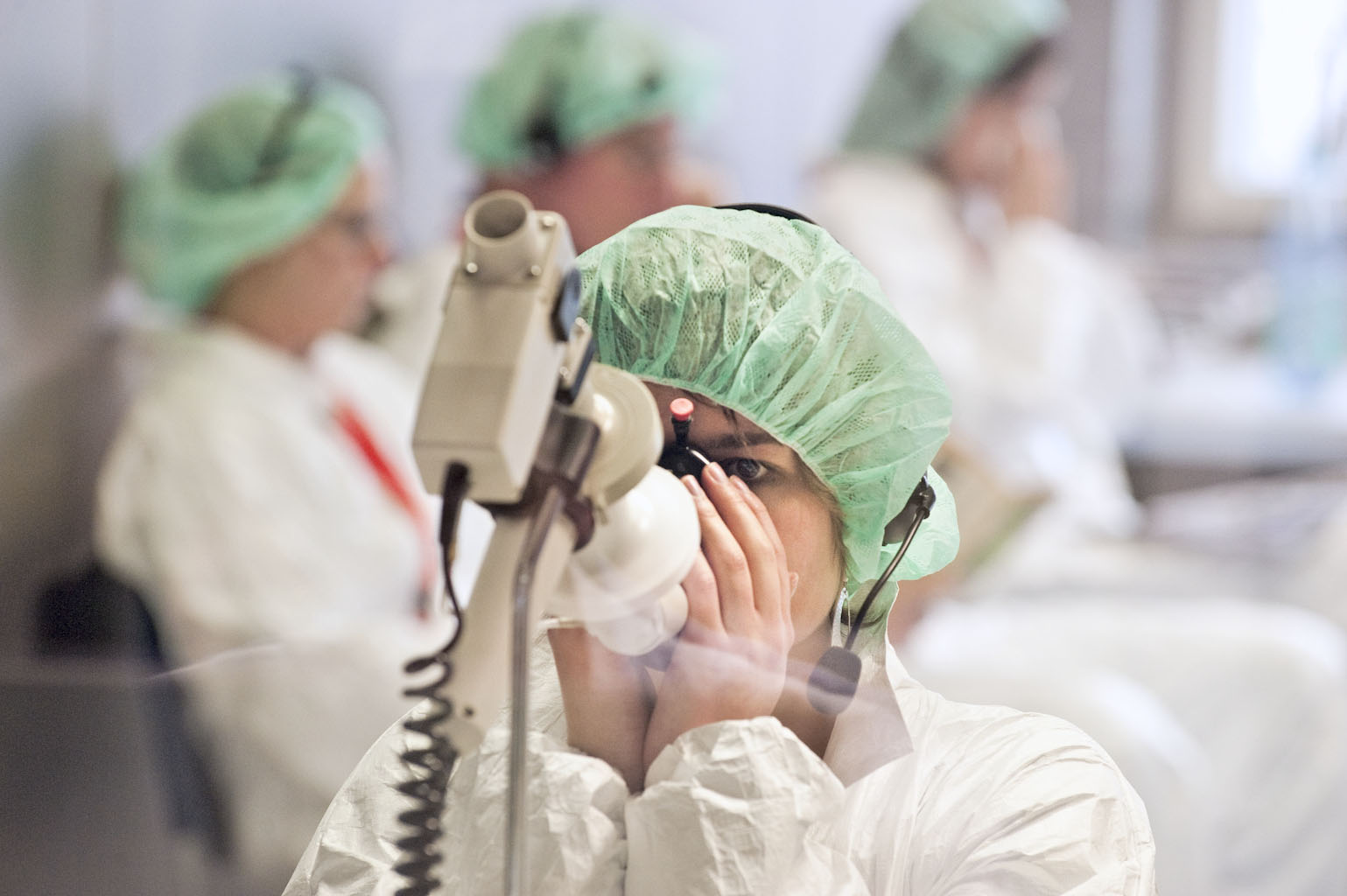Allergen challenges

Allergen challenge chambers
Allergen challenge chambers (ACCs) are an excellent tool for testing allergy treatments in early-phase clinical trials. Their particular advantages are controlled temperature, humidity and, especially, allergen concentrations, resulting in improved signal-to-noise ratios. As a result, they greatly reduce the number of participants needed to demonstrate significant treatment effects compared to standard field studies.
Fraunhofer ITEM is equipped with three special challenge chambers in which pollen and other allergens can be dispersed in the air under controlled conditions. These chambers, known as Fraunhofer Allergen Challenge Chambers (or Fraunhofer ACCs for short), each are 47 square meters in size and can accommodate 18 test subjects at a time. The Fraunhofer ACC model was validated for natural grass pollen in 2001 and for natural birch pollen in 2014. It has been used in numerous clinical trials to test the efficacy, duration, and onset of action of allergy treatments.
In 2008, Fraunhofer ITEM patented a process in which a commercially available allergen solution is mixed with lactose. The resulting solution is spray-dried to create particles of a defined size, which are then dispersed in a Fraunhofer ACC. This approach makes it possible to use the Fraunhofer ACC to test treatments for a wide range of allergens, including some that are difficult to aerosolize, such as cat dander and house dust mite. In addition, the ability to define the particle size permits targeted challenging of the nose or lungs.
But use of the Fraunhofer ACC is not limited to testing allergy treatments; it is also an excellent means of studying how allergic rhinitis symptoms affect the absorption of intranasal drug formulations by combining ACC exposures with pharmacokinetic studies.
Please see below for recent publications.
 Fraunhofer Institute for Toxicology and Experimental Medicine
Fraunhofer Institute for Toxicology and Experimental Medicine

